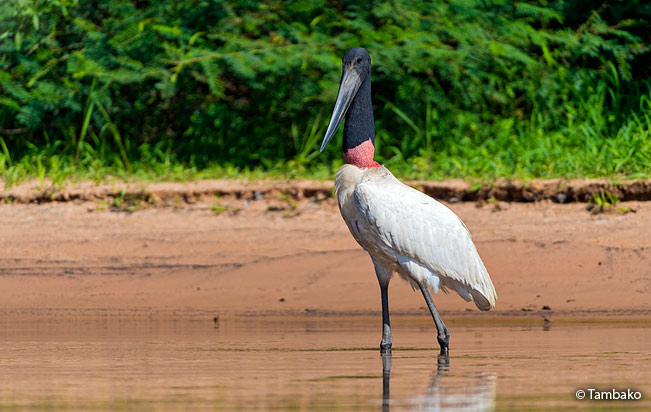Order: Ciconiiformes | Family: Threskiornithidae | IUCN Status: Least Concern

Age: Adult | Sex: Unknown | Loc. Southeast Peru

Age: Adult | Sex: Unknown | Loc. Southeast Peru

Age: Adult | Sex: Unknown | Loc. Mato Grosso, Brazil

Age: Adult | Sex: Unknown | Loc. Mato Grosso, Brazil
Status: The Jabiru Stork is rare in most of Amazonia. In Southeast Peru, they appear to be seasonally uncommon along major rivers. Jabiru Storks have been reported as a vagrant in the high Andes, in coastal wetlands, and in northwestern Peru. It also occurs in Co, Br, and Bo.
Name in Spanish: Jabirú o Tuyuyo.
Sub-species: Jabiru (Jabiru mycteria) Lichtenstein, 1819.
Meaning of Name: Jabiru: Tupi (Native Brazilian) yabi’ru, iambyrú= swollen neck, or very large neck. mycteria: Gr. mukterizo= large nose or beak.
 Voice
VoiceReferences:
-
- Species range based on: Schulenberg, T. S., D. F. Stotz, and L. Rico. 2006. Distribution maps of the birds of Peru, version 1.0. Environment, Culture & Conservation (ECCo). The Field Museum. http://fm2.fieldmuseum.org/uw_test/birdsofperu on 11/09/2014.